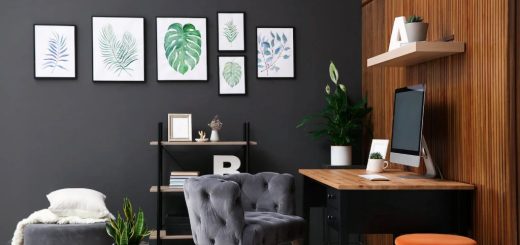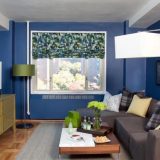The basic rules of interior design you need to know
Creating and decorating any space is equal to creating a work of art. The rules to follow compared to graphic design, painting or other forms of artwork are more or less the same. However, things might become a bit more complicated when you must picture the principles taking shape in 3D. For example, let’s analyse the concept behind designing an online slot game. Besides colours, symbols, and shapes, you have to consider other elements such as UX, gameplay, popularity, accessibility, and audience demands and preferences. Take a look at this popular Megaways game to see how these elements function between each other.
The rules in interior design, however, are a bit more abstract. There are some tricks and good directions that designers use to come up with stunning, impressive solutions. Let’s go back to basics and talk a bit more about the principles in interior design and their importance in spatial planning. Even if you’re not a designer, these will definitely come in handy at some point in your everyday routine.
Balance
Every designer, no matter the field of work, has to understand the importance of balance. This is about the visual weight of the space and creating harmony. Balance is created not just through shape, but through colour, pattern, and texture as well. We recognize three different kinds of balance:
Symmetrical – Formal spaces need symmetrical balance where space is evenly split into two sides that mirror each other. This kind of balance is easy to achieve as design elements are repeated on each side. If you are not careful, this approach can make your space monotonous and boring.
Asymmetrical: The visual weights of lines, colours, forms, and textures can be balances without the need for duplication. There are no strict rules as in the symmetrical balance and you can be more creative in experimenting. For example, a massive sofa can be balanced by placing two chairs on the opposite side.
Radial: This balance is achieved when you have a central, focal point in your space with other elements radiating from or around the point. An example of a focal point would be the big TV in your lounge area, and the sofa placed in front of it.
Rhythm
As in music, the rhythm in design is all about creating patterns of repetition in order to accomplish visual appeal and interest. You can achieve this by using the same colour or shape at different intervals. The purpose of the rhythm is to effortlessly move your eye around the room. For example, you can achieve rhythm by using a colour in the pillows and then picking that colour up again in a painting or a rug. These details help to carry your eye around the room.
Harmony
By definition, harmony is created when all element combines in one so that they create a unified message. If the rhythm creates excitement, harmony creates a sense of tranquillity. For example, you can create harmony by using just one colour, even though the forms can vary in shape, size, and texture.
Emphasis
A room where every detail gets equal attention and important might seem confusing or scattered. Spaces in architecture often have points of interest such as a fireplace or a window with a view. In a room where there is no point of interest or focal point, you can create one through furniture grouping or using an unusual large souvenir.
Scaling and proportions
Proportion is the ratio between two parts, in these case objects, while the scale is how the size of one object relates to another or the space in which is placed. The concept of scaling is used when one object’s size is familiar, for example, the height of a table or the standard wall heights. When it comes to scale and proportion, you’ll definitely hear about the 1.618 golden ratio. Nature repeats this ratio to create perfection. And is essential in describing human body proportions. Spaces and objects that contain this ratio are thought to be more aesthetically pleasing.
Details
Interior design also concerns the careful selection of materials, fabrics, and styles used for room décor. Paying attention to details and personalisation is very important. Naturally, furniture and colour play the biggest role but the details are those that make the difference between a playful, warm home with a concept.
Cohesion
This principle is used to put a person at ease within their surroundings, eliminating any feelings of discomfort. Cohesion is the final word to any design – when in effect, the space feels complete, complement with each part. When you apply all of the abovementioned principles in the right manner, you subconsciously judge whether space works or does not work for you.
















